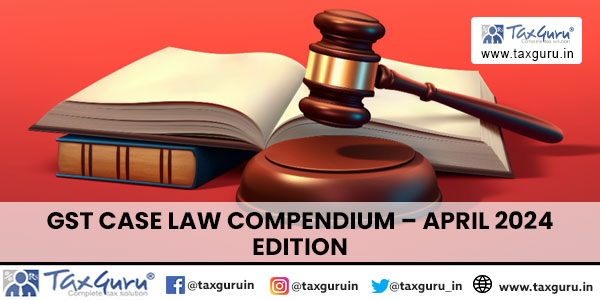
Many times Goods and Services are being sold/ rendered by using different kind of arrangements/ entities based on terms and conditions which could change Revenue Recognition criteria in its entirety and a careful assessment is always required because if any incorrect assessment is done it could have a significant impact on amount of revenue.
This concept is being considered while recognizing revenue and accordingly a Gross or Net revenue will be defined (not necessarily each time). There is no such concept in current Indian accounting standards.
When the transaction qualifies as “Principal” then the entity should recognize revenue based on the gross amount received or receivable in respect of its performance under the sale contract which is called “Gross bases”. Whereas if transaction qualifies as “Agent” then only the commission or other amount that will be received from its principal will be its revenue and hence all amounts that are being collected on behalf of Principal will not be recognized its revenue that it called “Net bases”.
Let’s look at relevant extracts from the standard about the concept and then we can talk about little further on this –
Ind-As 18 – Revenue
Para -8 – “……….Similarly, in an agency relationship, the gross inflows of economic benefits include amounts collected on behalf of the principal and which do not result in increases in equity for the entity. The amounts collected on behalf of the principal are not revenue. Instead, revenue is the amount of commission”
Appendix E -Para -21– “………. An entity is acting as a principal when it has exposure to the significant risks and rewards associated with the sale of goods or the rendering of services. Features that indicate that an entity is acting as a principal include:
(a) the entity has the primary responsibility for providing the goods or services to the customer or for fulfilling the order, for example by being responsible for the acceptability of the products or services ordered or purchased by the customer;
(b) the entity has inventory risk before or after the customer order, during shipping or on return;
(c) the entity has latitude in establishing prices, either directly or indirectly, for example by providing additional goods or services; and
(d) the entity bears the customer’s credit risk for the amount receivable from the customer……….”
Now,
Let’s have an example to understand this concept and its significance on revenue recognition –
Example –
Entity A is involved in manufacturing consumer products and has series of outlets which are being operated through contractual agreements separately. Entity A bears all inventory risk and credit risk on all goods which are being sold via these outlets. Prices are being used as set by Entity A. Whether Entity A is principal or agent?
Suggested approach :
Such type of assessments to identify if the series of such revenues are whether principal or agent requires consideration of several information associated with each case. Here in our example it is given that all credit risk is with entity A which means that if there is any default in payment of such goods, it will be borne by Entity A only and on the other hand all Inventory that has been sent to the outlet for sale will belong to Entity A only and at any time it can be sent back to them, hence Inventory risk is with entity A only. Hence Entity A is principal and requires Gross revenue.
There are some more indicators which should be properly documented/ analyzed while concluding such types of assessment whether it is a Principal or Agent –
1) One has to understand about the mechanism of the entire structure of any revenue stream and to identify if the prime responsibility to fulfill all obligation that would have been agreed (written or verbal) between a buyer and a customer is with whom?, and that would indicate the risk associated in case of any breach in such transaction and the principal will be the party who will bear these kind of risks,
2) Several times we simply consider who bears credit risk and after identifying such party we simply conclude that who will be the principal. But credit risk could be ONE of the indicators and SHOULD NOT be the only factor. E.g. some e-commerce industry where customer pays first for the goods and then a delivery is made will have no such credit risk at all and hence CREDIT RISK will not be useful in these cases,
3) One of the other factor which brings more clarity in these kind of assessment is where a party will be receiving its fixed kind of percentage over each and every product it sold and that could lead to a conclusion that the party is agent,
4) Usually Inventory/ Storage will be one of the significant component in case of the goods which requires significant accumulation and maintenance and one should find the party who will be responsible to all such costs associated with these Inventory and in case the stock will not be sold or expires then who will be responsible?…whoever will be responsible for the inventory will be acting as Principal,
5) Sometime customer walks in at the outlet and based on its requirement it signs (might be verbal also) an agreement at the outlet itself. Now, the careful assessment should be made whether the agreement is in the name of the Outlet or the party who actually supplies the goods and who will be responsible for obligations towards these contracts?..e.g. payment recovery or any breach of any terms etc. The party who will bear these risks will be Principal for these transactions.
Now,
One can see the significance of the concept and its impact of overall revenue amount of any entity and in case such assessment is not properly documented then it could lead towards wrong or overstated revenues.
Readers will appreciate about the main objective of the standard/ laws and an approach which one can follow while keeping in mind the basis of origin of such requirements. There could possibly be some specific situations or circumstances where the interpretation of any standard will be different as we should always keep in mind that IND-AS is principle based standards and lot more areas need management judgment in line with the standards relevant interpretation and best practices. Any Law related views are purely an interpretation by author and should not be construed as exhaustive in nature.
One has to look into all related facts and patterns before concluding this type of assessment based on this concept. Readers are requested not to take this article as any kind of advice (it is not exhaustive in nature) and should evaluate all relevant factors of each individual cases separately.
(Author of this article is an experienced chartered accountant who has specialization on various GAAP conversions assignments covering different industries around different part of the world including acting as an Independent IFRS Advisor & Corporate Trainer. He can be reached via email at anuj@gyanifrs.com or Whatsapp +91-9634706933)




















